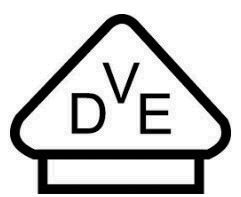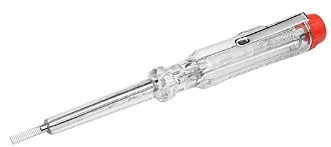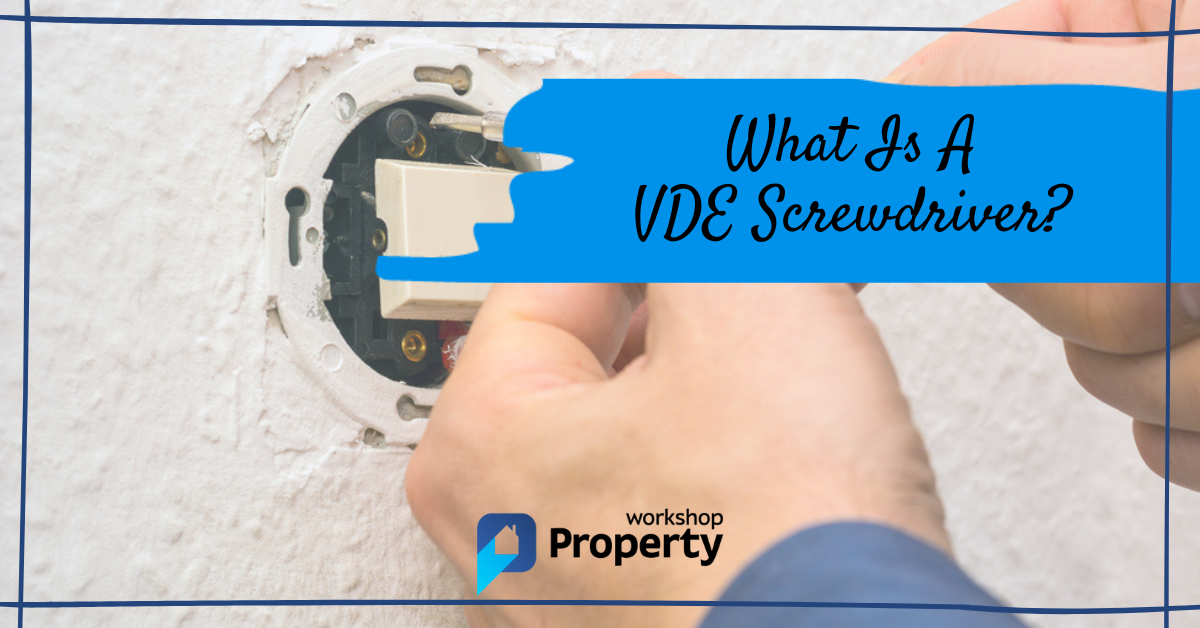Like most homeowners, I mostly leave electrical work to the experts. However, I sometimes fix or replace the odd electrical component. Before doing so, I always remember to switch everything off.
Despite my safety precautions, there’s still a slight chance that some current runs through the wiring. So, to be extra cautious, I always use a VDE screwdriver.
What is a VDE screwdriver? In its simplest form, it’s an insulated tool that protects you from touching live parts of a circuit. Some VDE screwdrivers also detect continuity in a circuit or component.
Read on to learn how these VDE screwdrivers work.
What Is a VDE Screwdriver?
VDE stands for Verband der Elektrotechnik, a German institution that sets the standards for electrical and electronic tools, components and installations.
VDE also tests hundreds of thousands of tools annually, meaning they play a significant part in electrical safety worldwide.
Here are a few things you should know about VDE screwdrivers:
VDE Screwdrivers Avoid Electrocution
If you work on or close to electrical circuits, you risk electrocution. Always use an insulated screwdriver that bears the triangular VDE mark below to avoid electrocution.

Insulated Shaft
Most screwdrivers have non-conductive handles, but a VDE screwdriver also has a unique shaft.
The shaft is coated with a plastic material, exposing only the tip. This coating prevents electric shock when working on electrical circuits.
Mains Testing Screwdrivers

The VDE screwdriver above is a typical mains testing screwdriver by Toolstek Wokin.
It’s fitted with a neon indicator in a clear plastic handle that illuminates when the slotted head of the screwdriver touches a live wire, and an earthing contact is made with the metal stud on top of the handle.
This VDE screwdriver is suitable for circuits up to 250 volts and checking whether a circuit is live. It’s also handy for checking continuity in a component such as a fuse.
Final Thoughts
A VDE screwdriver is a specialist tool certified for use on electrical circuits up to 1,000 volts AC or 1,500 volts DC.
Electricians use some types of VDE screwdrivers to check the continuity of a circuit and confirm whether a circuit is live.
Don’t take any risks. If you’re unsure about tackling any electrical work, use Rated People to find top electricians in your area.
FAQ
Below are answers to frequently asked questions about VDE screwdrivers.
What does VDE mean?
VDE is an acronym derived from Verband der Elektrotechnik, the German testing house for electrical tools. You will still see the VDE mark on many electrical tools and components.
VDE has been around since 1896, when a team of electrotechnology enthusiasts founded it to provide a safety standard for electrical installations and equipment.
More recently, the British and European Standard EN 60900 has been introduced for tools used on circuits up to 1,000 V AC and 1,500 V DC.
What screwdrivers do electricians use?
Electricians use tools that protect them from electrocution when working on live circuits. Virtually every hand tool has an insulated equivalent, from screwdrivers to hacksaws.
Most electricians use screwdrivers with a long, thin shaft insulated within 10mm of the head.
Many head types are needed to cover the range of equipment electricians work on, so most professionals go for interchangeable shafts with varying sizes of flat, Phillips, Pozidriv, and hexagonal heads.
Handles also vary, from the clear plastic type with a light bulb – primarily used for testing continuity – to the short stubby handles that provide a better grip in tight locations.
In this video, Joe Robinson of Efixx explains why electricians use insulated tools at work.
What is VDE 1000V?
VDE 1000V refers to the rating of tools, including screwdrivers, that are certified by VDE as suitable for use on circuits with up to 1,000 volts AC or 1,500 volts DC.
These tools are tested up to 10,000 volts AC, so a good margin for error is built-in.
What are the best electrical screwdrivers?
When choosing a set of VDE screwdrivers, the two things to consider are comfort and wearability.
The handle must feel right and provide an excellent grip to shift stubborn screws. The head must be tough enough to take the torque (rotational force).
Wiha offers an impressive set of VDE screwdrivers at the higher end of the price range. With 3 handles and 18 insulated chrome vanadium steel shafts plus a socket set, this package contains everything an electrician needs.
Draper also offers a good range of VDE tools, as you can see from this short video.
Can you touch a live wire with a screwdriver?
Unless you’re a qualified electrician, never work on a live circuit.
However, sometimes you might touch a live wire accidentally. For example, some residual current still runs through the wires when you’ve shut off a circuit. In these circumstances, a VDE screwdriver will protect you.
Can I make my own insulated screwdriver?
Yes, you can, but we don’t recommend it.
Wrap insulation tape around the shaft if you need to improvise for a one-off electrical job. Overlap the tape by at least half its width to ensure complete coverage and then repeat with another layer, staggering the joints.
Manufacturers typically make handles from non-conductive materials, so if your screwdriver has a plastic or rubber handle, you needn’t do any more to make it safe.
Use with extra caution. You can easily damage the tape and expose the bare metal with one slip. It’s always better to use a proper VDE-tested screwdriver.

